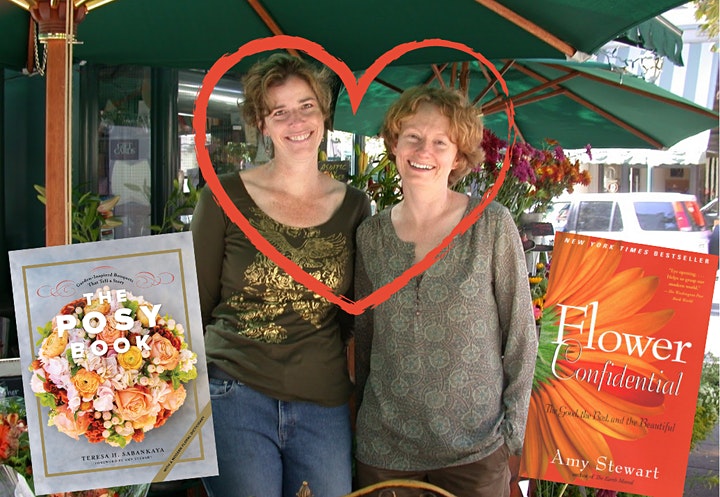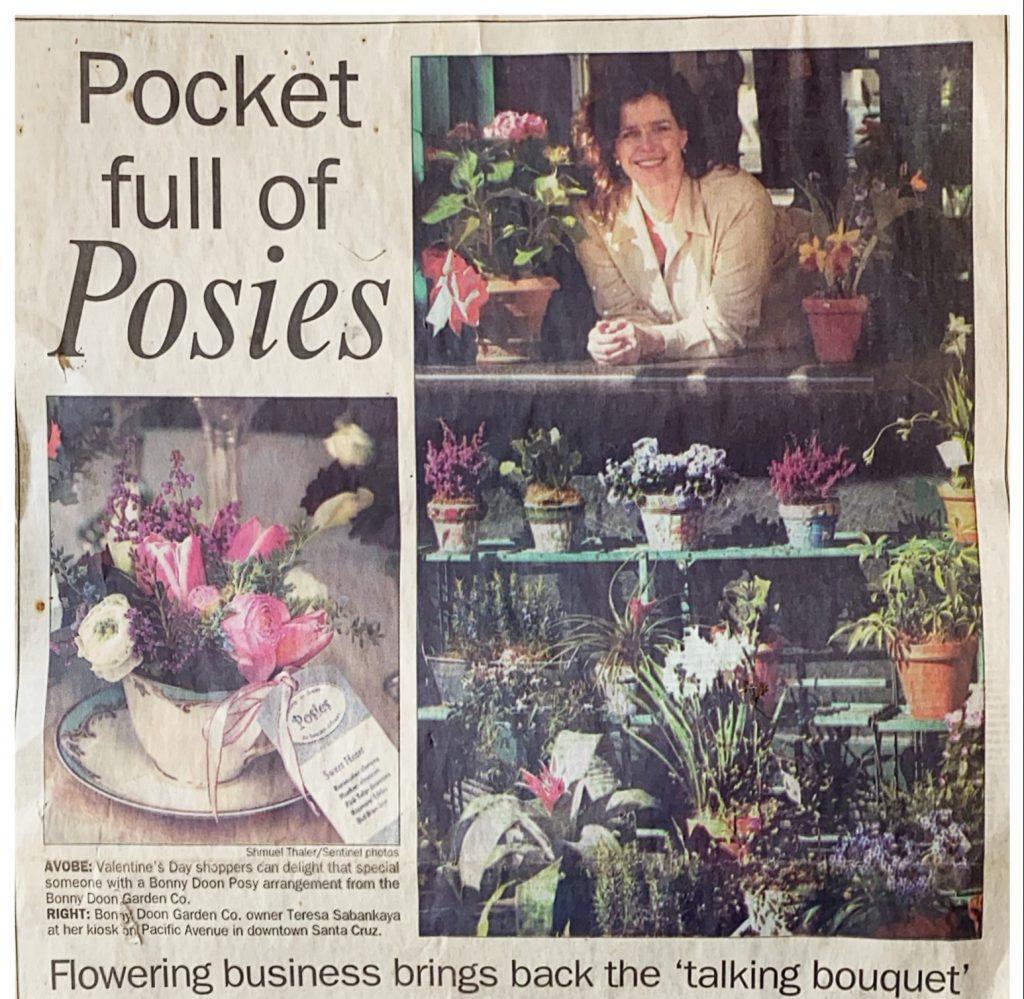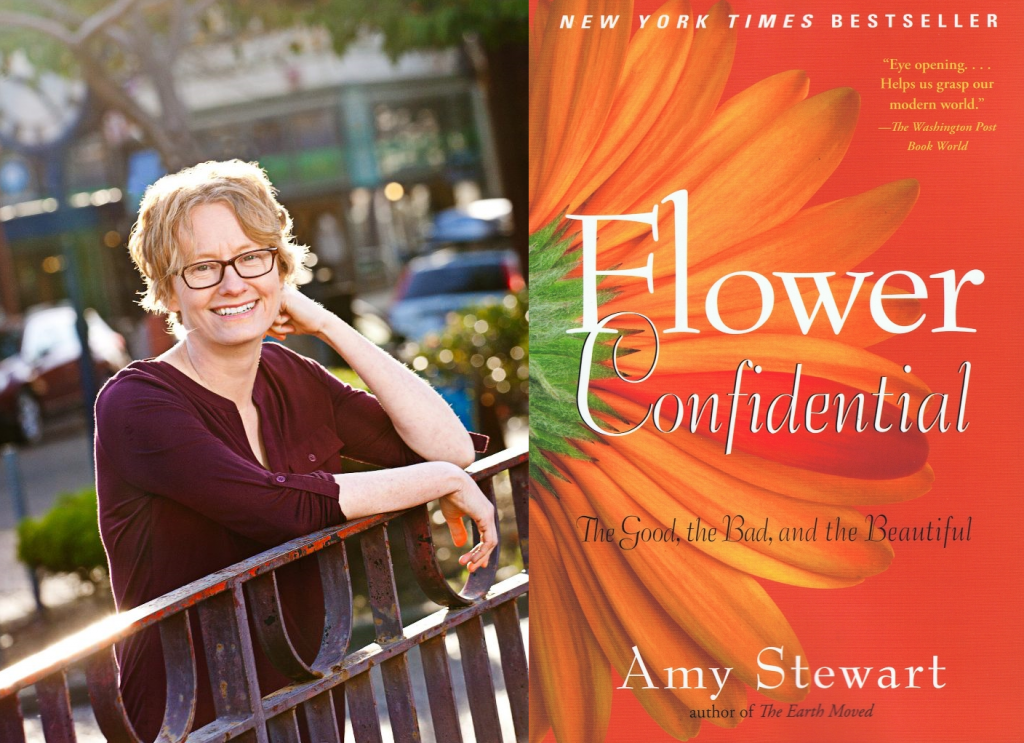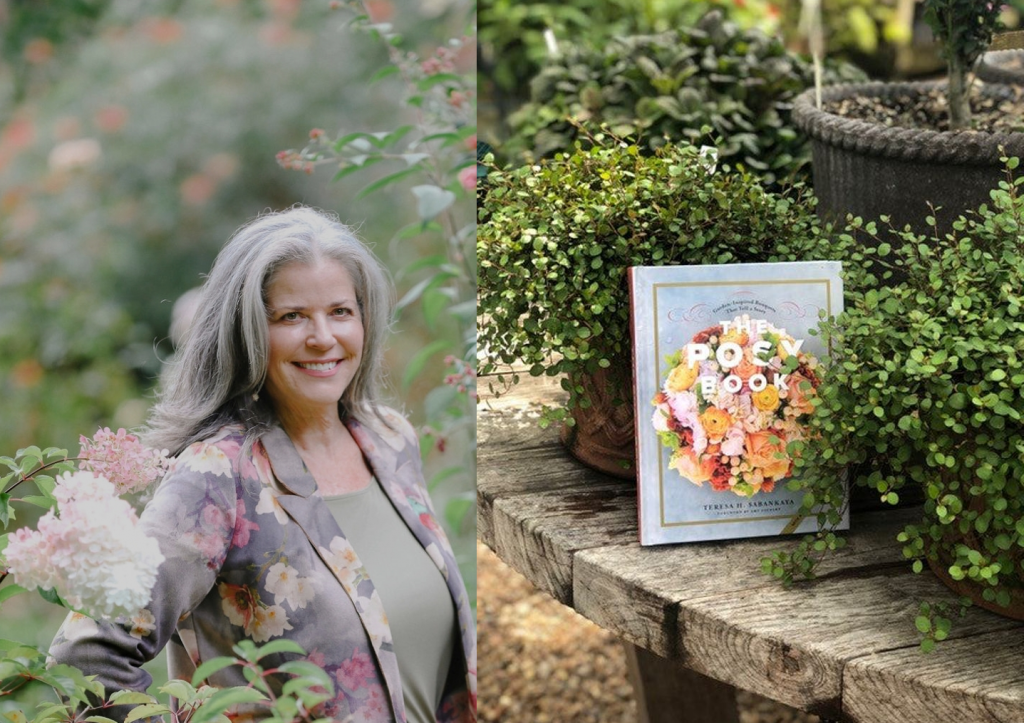
I met Amy Stewart on a Saturday morning Santa Cruz, California. I was working at my little flower shop on Pacific Avenue, and I had just finished setting up the display out on the sidewalk and contemplating my stock. It was what I call ‘shoulder season’ in my garden, which is the time in a garden when some blooms were finishing and producing seed pods, and others were coming into their prime, but not there yet. It was a suitable time to introduce some fun botanical alternatives to blooms, and on that day, I brought in some sweet silene seed heads. Those little whimsical bubbles dancing in the breeze caught Amy’s eye and ignited our conversation. She made a comment that she’d never seen anything like it, and that was my cue for a good conversation with this lady with a Texas accent just like mine.
Amy and I talked flowers and gardens for a while before she shared that she was writing a book about the floral industry, and asked to interview me for its pages. She said to me then, “I think you’re doing something really unique and different here, and I like it.” Amy planned to travel to Ecuador, Holland, Miami, and every other place that played a role in the industry. The way I understood it, she was going to write a book, or exposé, about the flower business and mainly explore where the U.S. stands in the landscape and how folks like me –a small independent florist — fits in to it.
I went into the retail florist business knowing I wanted to carve out a niche for a new way of growing, buying, and selling flowers. I didn’t know if I had a market for what I was doing or not, but I was bound and determined to source locally grown flowers, and organic flowers.
Teresa Sabankaya, Bonny Doon Garden Co.
At the time, I didn’t really think I was doing anything all that special. I was simply following my old-fashioned, environmentally-friendly heart. The year was 2004, and Bonny Doon Garden Co. was already five years into the business of growing boutique blooms and selling from a little kiosk in downtown Santa Cruz. I went into the retail florist business knowing I wanted to carve out a niche for a new way of growing, buying, and selling flowers. I didn’t know if I had a market for what I was doing or not, but I was bound and determined to source locally grown flowers, and organic flowers (if possible). “Sustainable” was not a word in the flower business, or even in agriculture at the time.
To be honest, I was thoroughly disappointed with what florists were offering to the marketplace then. All I saw were stiff, out-of-a-box roses that never opened their hearts up to us. Or, snapdragons that looked and felt like 2 x 4 pieces of lumber, and arrangements laden with baby’s-breath and leather-leaf fern and then inserted, leaves and all, into standard glass vases. I wanted to offer billowing, earthy, organic, fragrant, romantic floral arrangements displayed in beautiful vessels. Remember, that was 2004, and there were little to no local and organic flowers to be found. It wasn’t possible me to grow them all myself and finding local flowers was entirely different back then and I realized early on that if I wanted my business to survive, on my principles and terms, I would need to actively search to find local growers or any small farm or backyard specialty crop grower that would sell me their flowers.

I became chatty-Cathy at the kiosk, and I talked to anyone and everyone walking by my kiosk about my search. Eventually, word got around that I was looking to buy locally-grown flowers. One day a nice lady pulled up to the kiosk and had the whole back seat of her car filled with buckets of sweet peas from her garden. Wonderful! Sweet Pea lady kept growing those intoxicatingly fragrant flowers as long as she could, and little by little, other small independent specialty growers began to approach me with their flowers. This was not a quick process, but rather several long years.
Meanwhile, Amy and I had kept up our correspondence. She would call me occasionally with a few questions for her book, and I would share more about how things were going in the flower shop. And then one day in 2007, a package arrived in the mail for me from Algonquin Books, and inside was a paperback book titled Flower Confidential. Could this be it? The book? I was excited to see what she wrote, to say the very least, and of course I wanted to get to ‘my part’ as quickly as possible. But I could not get past the title of the book, and especially that subtitle, The Good, the Bad, and the Beautiful in the Business of Flowers. I sat and contemplated that title and subtitle and thought this is going to be GOOD. And I was right.

The book fully engaged me at once. As you all know, Amy Stewart is a great writer, and her style captures your attention right off the bat. She writes with such charm, humor, and wit that you forget you are learning about the breeding, growing, and the selling of flowers. The book is chock full of industry enigmas; all the technicalities became understandable to me and I met some amazing people with heart-warming and mind-blowing stories along the way. Who knew there was so much that went into breeding a flower? And in a lab at that? I delighted to learn that just up Hwy 1 from me was Don Garibaldi, one of the country’s only grower of heirloom Italian violets! Reading Flower Confidential for the first time was like an epiphany. It was like each page anchored my beliefs and made me proud of what I was doing. And at the end of the book, I felt inspired, sad, motivated, and loved all at the same time.
Reading Flower Confidential for the first time was like an epiphany. It was like each page anchored my beliefs and made me proud of what I was doing.
Teresa Sabankaya
Flower Confidential meant so much to me then, and it still does today. The book changed our industry forever; it’s as simple as that. What Amy wrote about me, and my business was an enormous pat on the back and a warm hug. There were times I thought I thought I had lost my mind trying to educate every single person who bought even a solitary bloom from me, as I told the story of where that flower came from and what went into growing it. It was emotional for me to read Amy’s Chapter Nine in a way that I cannot put into words. Finally, someone recognized, and then brought to light what I was and still am trying to do, and in such a dynamic way. It was an honor to be included in this book, and especially alongside her narrative of 19th Century florists who did things the way I did and still do.

Amy and Flower Confidential made us all look at the ephemeral beauty of flowers in a unique way. Now we seek a SLOW perspective in a world full of speed and haste, thankfully. And now we honor a flower grower and designer, or nowadays we call it a farmer-florist; either way—and we celebrate backyard garden grown blooms, as well as commercial greenhouse grown blooms that are cultivated with thought and care for our environment, for our workers, our economy and personal well-being. What Amy did with this book changed our minds for the better and put into our hands the knowledge and tools that inspired the origins of our community, while also empowering us to change directions not only as businesses, but also as consumers.
Happy 15th Flower Confidential. Because you shed a light on our flower industry, we can now source local, organic, and sustainable grown flowers for our floral enterprises. The everyday flower consumer can easily look at labels and know where that bunch of tulips comes from, and even the method in which they were grown. Because of you, I can more easily leave my own mark in the world, and for that I am so very thankful.
